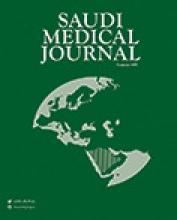To the Editor
In this article, authors reported an unusual case of central alveolar hypoventilation in a young patient with a body mass index (BMI) of 21 kg/m2 and with a genetic testing negative for PHOX2B gene mutation.1
In this unusual case, we have some comments regarding ventilatory management:
1) During the first and second extubation, the authors do not report post-extubation partial pressure of carbon dioxide (pCO2) levels and whether the patient received non-invasive ventilation (NIV). The usefulness of NIV in patients with hypoventilation syndrome after acute events that follow chronic hypercapnic respiratory failure is well documented.2 On the other hand, tracheostomy may be a valid treatment for patients who cannot tolerate NIV, have poor NIV compliance, or cannot achieve a successful extubation.
2) Regarding ventilatory management, the authors did not report data on ventilatory mechanics; especially exhaled tidal volumes, minute volume and respiratory rate, while the patient underwent volume control-synchronized intermittent mandatory ventilation. This information is useful in congenital central hypoventilation syndrome (CCHS), which is characterized by alveolar hypoventilation; modest hypoventilation occurs during REM sleep and variable hypoventilation occurs during wakefulness. However, hypoventilation results from persistently low tidal volume with variations in minute ventilation, mainly as a result of respiratory rate fluctuations.3
3) About polysomnography analyses, the authors reported high values of PaO2 and SaO2 during polysomnography testing: PaO2: 232 mm Hg during the first study and 160 mm Hg during the second study, (both with SaO2 above 98%). However, the diagnosis of CCHS is suspected when polysomnography testing demonstrates hypoxia and hypercapnia that are worse during sleep than during wakefulness, and confirmed by a PHOX2B mutation in genetic testing.
4) Regarding hospital stay, the authors did not report length of hospital stay and mechanical long-term ventilator use, neither the presence of nosocomial infection nor germ isolation. Currently, the role of nosocomial infections in the intensive care unit stay is well studied and influences treatment and progression of disease.4
We highlight the importance of the presentation of this unusual case and believe that the considerations exposed should be taken into account to clarify concepts that might be overlooked in clinical practice.
Reply from the Author
We thank Briones-Claudett & Grunauer for their interest and comments on our article “Unusual case of central alveolar hypoventilation”.1
Later-onset congenital central hypoventilation syndrome (CCHS) usually have the mildest hypoventilation, presenting primarily after exposure to respiratory depressants or severe respiratory infection, and are managed with nocturnal ventilatory support only as they have hypoventilation during non-rapid eye movement (REM) sleep while adequate ventilation is maintained during wakefulness.5 The diagnosis is made based on clinical findings of alveolar hypoventilation and autonomic nervous system dysfunction in the absence of primary pulmonary, cardiac, or neuromuscular disease, or a causative brain stem lesion that can account for the entire phenotype; and identification of a pathogenic variant in PHOX2B. The patient in this case report had clinical findings consistent with the diagnosis of late onset CCHS; however, she tested negative PHOX2B gene. Approximately 10% of individuals with CCHS are heterozygous for a missense, nonsense, or frame shift mutation in the PHOX2B gene.6 Pending further detailed DNA sequencing, she is considered to have idiopathic central alveolar hypoventilation. Following the 2 extubation trials, she developed acute deterioration in level of consciousness, became drowsy and unresponsive, brady cardic and desaturated down to 70’s, arterial blood gas were taken on 100% NRM preceding the reintubation in the 2 occasions (Table 1).
The 2 arterial blood gas intubation.
Non-invasive ventilation was not tried due to low GCS and hemodynamic instability. Both reintubations occurred during sleep. Bi-level positive airway pressure was used for weaning off nocturnal ventilation and for long term management following the resolutuion of the acute event. During volume control synchronized intermittent mandatory ventilation, Vt was 400, respiratory rate was set at 12, positive end-expiratory pressure was 5, pressure support was 10, fraction of inspired oxygen (FiO2) was 30%, exhaled tidal volume was ranging 350-560 ml. This is consistent with the central hypoventilation where the tidal volume with resultant effect on minute ventilation varies between sleep and wakefulness, being lowest in non-REM sleep in CCHS, but it is also abnormal during REM sleep and wakefulness, although usually to a milder degree sleep.
During the polysomnography conducted in the ICU, the patient showed evidence of hypoventilation and high PCO2 which was detected promptly after 45 minutes in first trial and 10 minutes in the second) and patient was connected back to the ventilator to prevent further Oxygen desaturation.(hypnogram1)
The patient had prolonged hospital course.The total hospital length of stay was 113 days, out of which 97 days were spent in the intensive care unit. She was mechanically ventilated, mostly at night for 65 days. Tracheostomy and later diaphragmatic pacing were performed to facilitate weaning from mechanical ventilation. Her course in the intensive care unit was complicated with one episode of ventilator associated due to Klebsiella pneumoniae that was treated with appropriate antibiotics.
This unusual case alerts physicians to consider central alveolar hypoventilation in young patients presenting with type 2 respiratory failure following respiratory infections particularly during sleep.
Hadil AK. Alotair
Department of Critical Care Medicine, King Saud University, Riyadh, Kingdom of Saudi Arabia, ORCID ID: orcid.org/0000-0002-1385-6268
- Copyright: © Saudi Medical Journal
This is an open-access article distributed under the terms of the Creative Commons Attribution-Noncommercial-Share Alike 3.0 Unported, which permits unrestricted use, distribution, and reproduction in any medium, provided the original work is properly cited.






